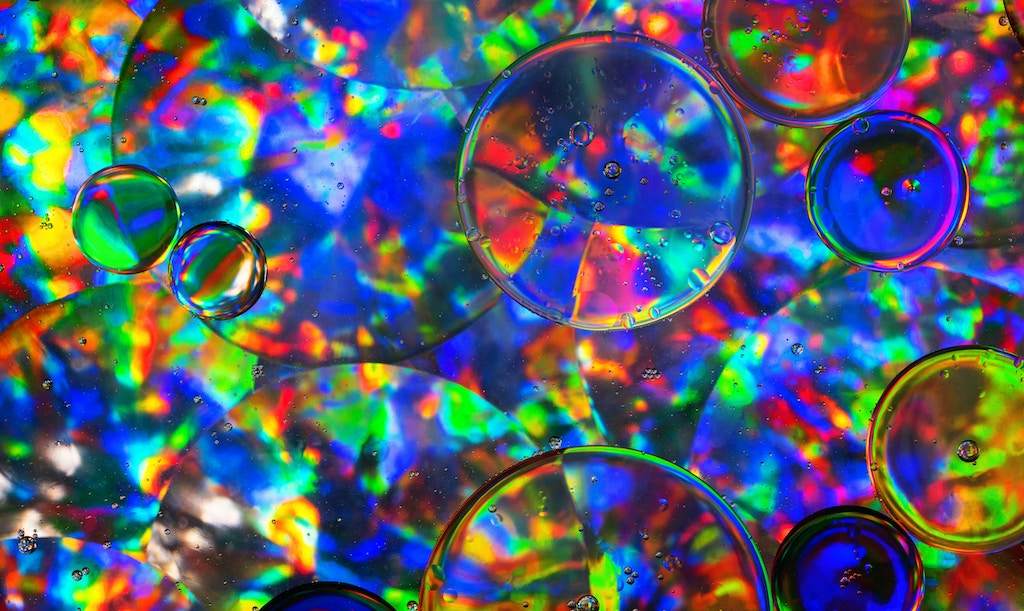Published
Wed, Apr 19, 2023, 08:00
- Today is Bicycle Day, which celebrates the 80th anniversary of the first LSD trip in 1943.

Like cannabis, psychedelics such as LSD and mushrooms can help artists tap into their creativity.
Today, April 19th, is the 80th anniversary of the first LSD trip–AKA Bicycle Day. To celebrate, George Evelyn, the artist better known as Nightmares On Wax, told Resident Advisor he'll "hit the studio and microdose on mushrooms."
Evelyn discovered microdosing five years ago. "Four hours would fly by [and] I'd create a lot of work," he said. "You just zone in without the awareness that you're tripping. In the creative process, it helped me zone in. On a personal level, it can help me get out of the way of my creation and be more open. Psychedelics don't give you what you want but what you need." But, he added, it's important to "set good intentions."
Psychedelics have also inspired scores of psytrance and downtempo producers, such as OOOD, Akasha Experience and Noodreem. For OOOD cofounder and mastering engineer Colin Bennun, the power of psychedelics is enough to leave a lasting effect, meaning continued consumption may not be necessary for creativity. "Once you've opened the door, you don't need to keep kicking it open," he told RA.
Eris Drew, on the other hand, is a regular consumer. She took LSD from 1992 until 1996 before taking a ten-year break and experimenting with mushrooms. Today, she spends time microdosing and fully tripping for both psychotherapeutic and creative purposes, and could "write a book" about her experiences.
"Taking psychedelics in nature is like having an encounter with 'otherness,'" she told RA. "[Psychedelics] showed me there's a mystery at the centre of being and the world is more fluid and alive than we realise."
She added: "I love to create while on low doses of psychedelics. Not a microdose, but what I call a 'functional dose'–enough to feel it but not enough that you need to sit down and just melt into the otherness. If you see me DJing at a party or doing something social on psychedelics like raving, it's usually a functional dose."
Drew also spent several months microdosing dried mushrooms with her DJ and life partner, Octo Octa. "This was for general healing, including to help with grieving the loss of our cat," she said.
Growing up as a young trans person, Drew wasn't comfortable taking psychedelics around most people "because I wasn't able to share things about myself–so losing control in social situations was terrifying and destabilising–but those feelings, they were telling me something, you know?"
According to Drew, it's also vital to understand harm-reduction techniques. Take small doses and be in a trusting environment if consuming at parties. "This is important: if maintaining boundaries is a problem for you in life, think twice before doing psychedelics," she said.
Chiara Baldini, a raver, historian and author of the book Psychedelic Mysteries of the Feminine: Creativity, Ecstasy, and Healing, is speaking this week at the Breaking Conventions conference on psychedelics. She said people have been dancing to repetitive beats on these drugs for longer than we think.
"The use of mind-altering substances combined with percussive music characterised by repetitive rhythm patterns has been a feature of human rituals since time immemorial," she told RA.
Baldini describes psychedelics as a form of "spiritual technology" that allows humans to "transcend their everyday reality and travel to other imaginal realms to gain inspiration, healing, spiritual insights, overcome fear of death and strengthen community."
She continued: "These days drums have made room for computers and plants for synthesised alkaloids—yet the results are strikingly similar."
Celebrated annually on April 19th, Bicycle Day is named after an experiment by Swiss scientist Albert Hofmann in 1943. He purposefully dosed himself and his assistant with 250 micrograms of LSD before cycling home from his lab. Hofmann had accidentally consumed LSD just three days earlier and this propelled him to explore its effects, leading to one of the biggest breakthroughs in psychiatric therapy.
Revisit our Art of DJing interview with Eris Drew, where she discusses music and psychedelics in more detail.
Photo: David Clode